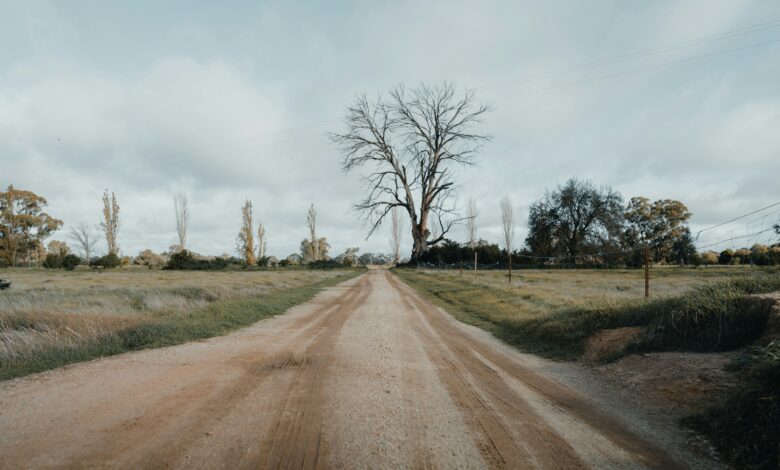
For generations, the village of Rampachodavaram in Andhra Pradesh has been home to a majestic banyan tree that stands as a symbol of endurance and legacy. Known affectionately as the “Century-Old Dead Tree,” this natural marvel is not only a testament to the area’s rich biodiversity but also a beacon of hope and resilience. In recent years, efforts to revive this ancient tree have garnered significant attention, sparking a wave of environmental and community-driven initiatives. This article explores the journey of reviving the Century-Old Dead Tree, highlighting the challenges, efforts, and the glimmer of hope it represents for the community and beyond.
1. The Historical Significance of the Century-Old Dead Tree
The Century-Old Dead Tree, a massive banyan tree located in Rampachodavaram, is deeply woven into the fabric of the village’s history. Its sprawling roots and expansive canopy have provided shade and shelter to countless villagers over the years. According to local folklore, the tree was planted by the village elders over a century ago as a symbol of unity and strength. It has witnessed numerous generations grow, thrive, and evolve, making it a living chronicle of the community’s past.
In recent decades, however, the tree began to show signs of decline. Environmental changes, coupled with urbanization and neglect, contributed to its deteriorating health. By the late 20th century, the once-vibrant banyan tree had become a shadow of its former self, earning the moniker “Dead Tree” among the villagers. Despite its state, the tree remained a powerful symbol, and efforts to restore it have since become a focal point for environmentalists and the community alike.
2. Challenges in Reviving the Ancient Banyan Tree
Reviving a tree as ancient and massive as the Century-Old Dead Tree comes with its own set of challenges. One of the primary issues faced by conservationists was the extensive damage to the tree’s root system. Over the years, soil erosion and human activities had significantly weakened the roots, making it difficult for the tree to absorb essential nutrients.
Additionally, the tree’s branches had become brittle and prone to breakage, posing a safety hazard to the villagers. The local climate, with its periodic droughts and floods, further complicated the revival efforts. Addressing these challenges required a multifaceted approach, combining traditional knowledge with modern scientific techniques.
Environmentalists and local authorities faced the daunting task of restoring the tree’s health while ensuring the safety of the community. This involved careful planning and collaboration between various stakeholders, including botanists, arborists, and local villagers, all united by a common goal: to breathe new life into the beloved banyan tree.
3. The Collaborative Efforts to Save the Century-Old Dead Tree
The initiative to revive the Century-Old Dead Tree gained momentum in 2020 when a group of environmental activists, botanists, and local villagers joined forces. Their efforts were bolstered by widespread coverage in Andhra news, which helped garner public support and attract funding for the project.
One of the key strategies employed was soil remediation. Experts conducted extensive soil testing to identify deficiencies and introduced organic matter and nutrients to enhance soil quality. This helped to rejuvenate the root system, enabling the tree to better absorb water and nutrients.
In addition to soil treatment, a structural support system was installed to stabilize the tree’s branches. This involved the use of non-invasive techniques such as cabling and bracing, which provided support without causing further damage to the tree. Regular pruning and trimming were also carried out to remove dead and weak branches, reducing the risk of breakage.
The local community played a crucial role in the revival efforts. Villagers volunteered their time and resources, participating in tree care activities and raising awareness about the importance of preserving their natural heritage. Educational programs were conducted to teach sustainable practices, ensuring that the knowledge and skills required to maintain the tree were passed on to future generations.
4. A Symbol of Hope and Resilience
The revival of the Century-Old Dead Tree has become a powerful symbol of hope and resilience for the village of Rampachodavaram. The tree’s journey from near-death to renewed life has inspired countless individuals and communities, demonstrating the impact of collective effort and the importance of preserving natural heritage.
Today, the banyan tree stands tall and strong, its canopy providing shade and comfort to villagers and visitors alike. It has become a popular spot for community gatherings, cultural events, and educational tours, attracting people from all over the region. The success of this revival project has also sparked interest in similar conservation efforts, encouraging other communities to take proactive steps in preserving their natural landmarks.
The story of the Century-Old Dead Tree has been widely covered in Andhra news, bringing attention to the region’s rich biodiversity and the importance of environmental conservation. It serves as a reminder that even in the face of adversity, nature has an incredible capacity for renewal and regeneration.
Conclusion
The journey to revive the Century-Old Dead Tree in Rampachodavaram is a testament to the power of community spirit, collaboration, and determination. What was once a symbol of decline has now become a beacon of hope, inspiring efforts to protect and preserve natural heritage across Andhra Pradesh and beyond. Through the combined efforts of environmentalists, scientists, and local villagers, the banyan tree stands as a living reminder of the enduring strength of nature and the resilience of communities united by a common cause.
As we continue to face environmental challenges, the story of the Century-Old Dead Tree serves as a powerful example of what can be achieved when people come together with a shared vision. It is a story that will be remembered for generations to come, reminding us that with dedication and care, we can restore and protect the natural world for the benefit of all.
